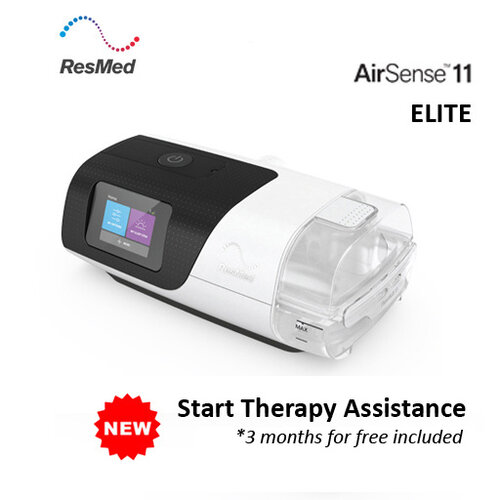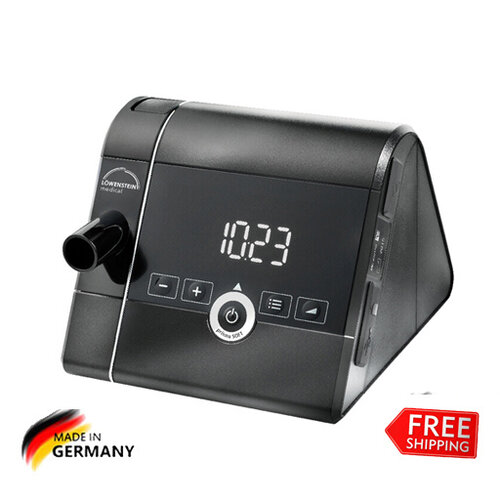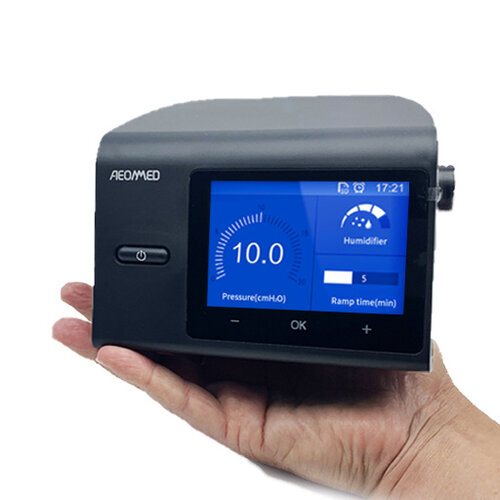How does a CPAP (Continuous Positive Airway Pressure) device work?
Continuous positive airway pressure (CPAP) is an electric turbine that generates a continuous flow of air. Therapeutic pressure is assessed by your attending physician. Air is sent to the upper respiratory tract using a hose and a cpap mask. The air flow creates an overpressure in the throat and keeps the airways open. CPAP automatically compensates for pressure according to variations in altitude. Automatic leakage compensation ensures continuous and efficient treatment. The sleep ramp allows the patient to benefit from lower pressure at the start of the night. The quality CPAP must be silent (max 30dB), light, ergonomic and have a universal power supply. Some CPAPs operate on 12V or have an internal battery. The integration of a heated humidifier is an interesting option. Therapeutic compliance software allows your attending physician to monitor your treatment.
Maintenance of a CPAP device:
It is recommended to rinse the dust filter every week with water. Wait until the filter is completely dry before replacing it on the back of the appliance. The filter must be replaced at least once or twice a year (this will ensure the hygiene and the lifespan of your CPAP device)

















